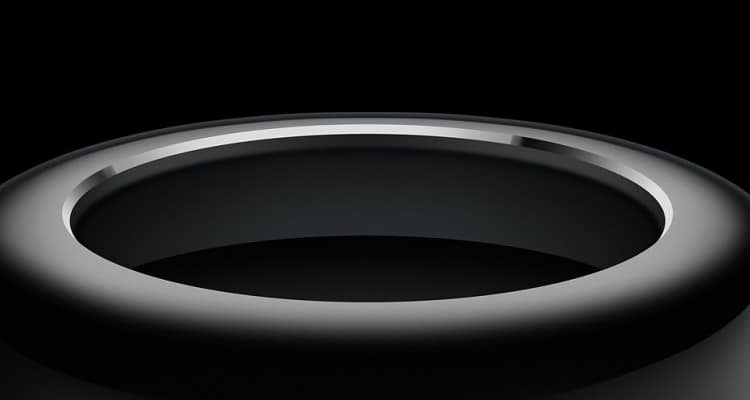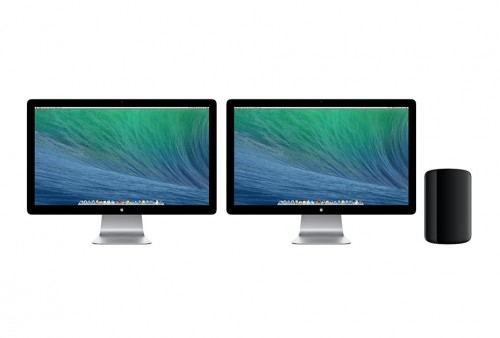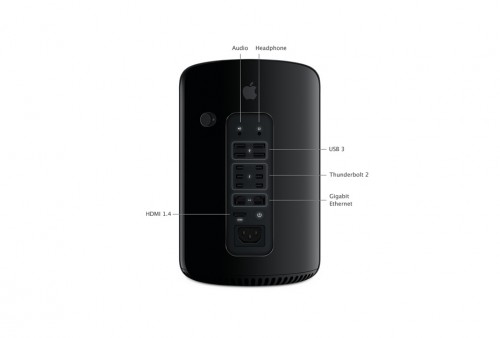So Can We Build a Better Entry Level Mac Pro (Cheaper) than Apple Can?
So here we are again. We’ve researched and taken our best parts that match the Apple Mac Pro’s entry level configuration, spec for spec, and have come up with our final totals. After tabulating everything, from the enclosure, to the operating system (add another $99.99 US for Windows 8 Pro), we have managed to achieve a total of $3994.65 US using today’s prices at retailers that actually stock the hardware. Although it isn’t quite as horrible as the defeat we were handed when trying to spec for spec build out the top end Apple Mac Pro DIY style, as a percentage, we did much worse on the low end, giving up over a grand to the entry level Mac Pro at $2999.99 US. However, we did accomplish the second order of business which was to build it better.
In our spec, we have better workstation graphics cards, the AMD FirePro W7000s, clocked higher, and with twice the memory per GPU (2GB vs 4GB). We also have 16GBs of ECC DDR3 memory using very easy to upgrade 8GB modules, vs the 3x4GB modules that Apple would have sold you. And one thing I’m quite happy with is that instead of trying to make the system as small as possible, we were reasonable, using a very compact chassis (Corsair Carbide 200R) and a robust workstation grade ASUS X79 motherboard. The extra space gives us more options to expand our storage internally, and we’ve got additional slots leftover for video capture cards, sound cards, and other hardware that creative professionals need.
What about Thunderbolt and Wireless capability? Triple antenna 802.11AC cards can be had for around $99.99 US and offer better performance. And Intel is already implementing a Thunderbolt upgrade program, should your needs require it. And when USB 3.1 or 4 arrives, the PCI-e slots in our DIY system are ready and waiting.
That’s not to say that Apple did a bad job. In fact, overall, I think the Apple Mac Pro, whether you like the look of it or not, whether you like Apple or OS X or not, is an extremely highly modded, and optimized PC that has very high end professional hardware, that fits in a space that is no bigger than some of the larger drink sizes at 7-11 in the US. But that’s also where we see some weaknesses, from the lack of internal upgrade-ability, which will make you spend more money to make the transition to the new platform, to the additional heat generated, leading to design compromises like underclocked GPUs. You simply can’t take the hardware you’ve invested in with your previous generation Mac Pro, that you’ve kept alive well past its prime with industry standard upgrades from the PC world, and migrate into this generation.
Long term, because the GPUs are not industry standard, and the likelihood that Intel has yet again supplied Apple an “uncapped” CPU, even if not soldered in, makes your upgrade path, more like a trade in path (UPDATE: The CPU can be removed and the cap is intact). You’ll need to buy a new machine to get the latest GPUs and CPUs and there is no slowing down of the innovations that are coming our way in this space. And that’s why the higher price of the PC DIY build starts to fade away in saved money and increased upgradeability down the road. You get to keep your machine at a high level of performance longer, versus letting it degrade in performance over time, which can be money/time saved in that long run. And if you are into making your system specialized for specific applications, the lack of choice for GPU brands is also a downer as the competitors do flip/flop in position from time to time.
However, if you are a long term Mac fan and you’re invested in OS X in some way, then it might be difficult for you to switch over. Or maybe you don’t even want to. Or have apps that are crucial for your professional life that you have no Windows alternatives. In that case, Apple’s new Mac Pro still offers an extremely compelling pricing offer, both at the low end, and at the top end, that no longer carries the traditional “Apple Tax” and in fact, is quite a good value when you compare part for part/spec for spec, with a PC DIY build counterpart.
But if you are open to change, and want a machine that lasts a longer time, just like the original Mac Pros that were very much inspired by their PC DIY brethren, then you can also have the same hardware, but at a bit of a “PC Tax”. But for this price premium, and it’s really weird saying that, you’ll get a machine that hangs with you for a much longer time, at a much higher performance level throughout its useful life, with CPU and GPU and RAM upgrades down the road. There’s no need to buy Thunderbolt peripherals/drives to store your stuff, and you can, mostly likely, plug in many of the expansion cards and hardware that came out of your Mac Pro, the generation before this one. You can even add Thunderbolt 2 ports later if you need them.
Let’s not forget, that in the PC DIY world, there’s always more than one way to get the performance that you want, at a much lower price. From overclocking components, to using alternate non-professional grade components, we could easily drop the ECC memory, Xeon processor, and workstation grade cards, and come up with a system that is literally HALF the price of what we’ve priced it out at, with similar or greater performance. And that’s where the value of PC DIY comes in because at the end of the day, no one will know whether you made your masterpiece film on a Mac or a PC (unless you tell them). Then you can even take a break from professional apps and play games with it.
But you will be pocketing more money from the royalties because you’ve spent less in both the long run and the short run by building your workstation yourself, upgrading along the way, or even, built it with alternate components that give more bang for the buck. Plus, most PC components themselves carry warranties longer than the one year Apple warranty (2 years in Australia), when you purchase the retail versions of DIY components. For example, the CPU has a 3 year warranty, most motherboards have a 3 – 5 year warranty, and some graphics cards have a lifetime warranty, as an example. While with Apple, you will need to purchase Apple Care to get any satisfaction after the warranty period is over. Remember to make an appointment.
At the end of the day though, I’m still impressed by what Apple has accomplished with the new Mac Pro, which is to erase one of the biggest criticisms of their hardware, and that’s the “Apple Tax”. With a careful selection of components that give them an advantage in pricing, the new Mac Pro stands out to be one of the least expensive ever. Well played Apple.
What are your thoughts on Apple’s new Mac Pro?
To have a look at how our top end build turned out against the new Apple Mac Pro, you can have a look at our original article right here.
To see what is likely upgradeable (or not) in the New Mac Pro check out this article right here.
UPDATE: At CES 2014, we caught up with Other World Computing (OWC), who is the leader in DIY upgrades for the Mac ecosystem. We spoke directly to their CEO, Larry O’Connor, and in our exclusive interview, we cover exactly what is (and isn’t) upgradeable on Apple’s New Mac Pro 2013. You can check it out here.



